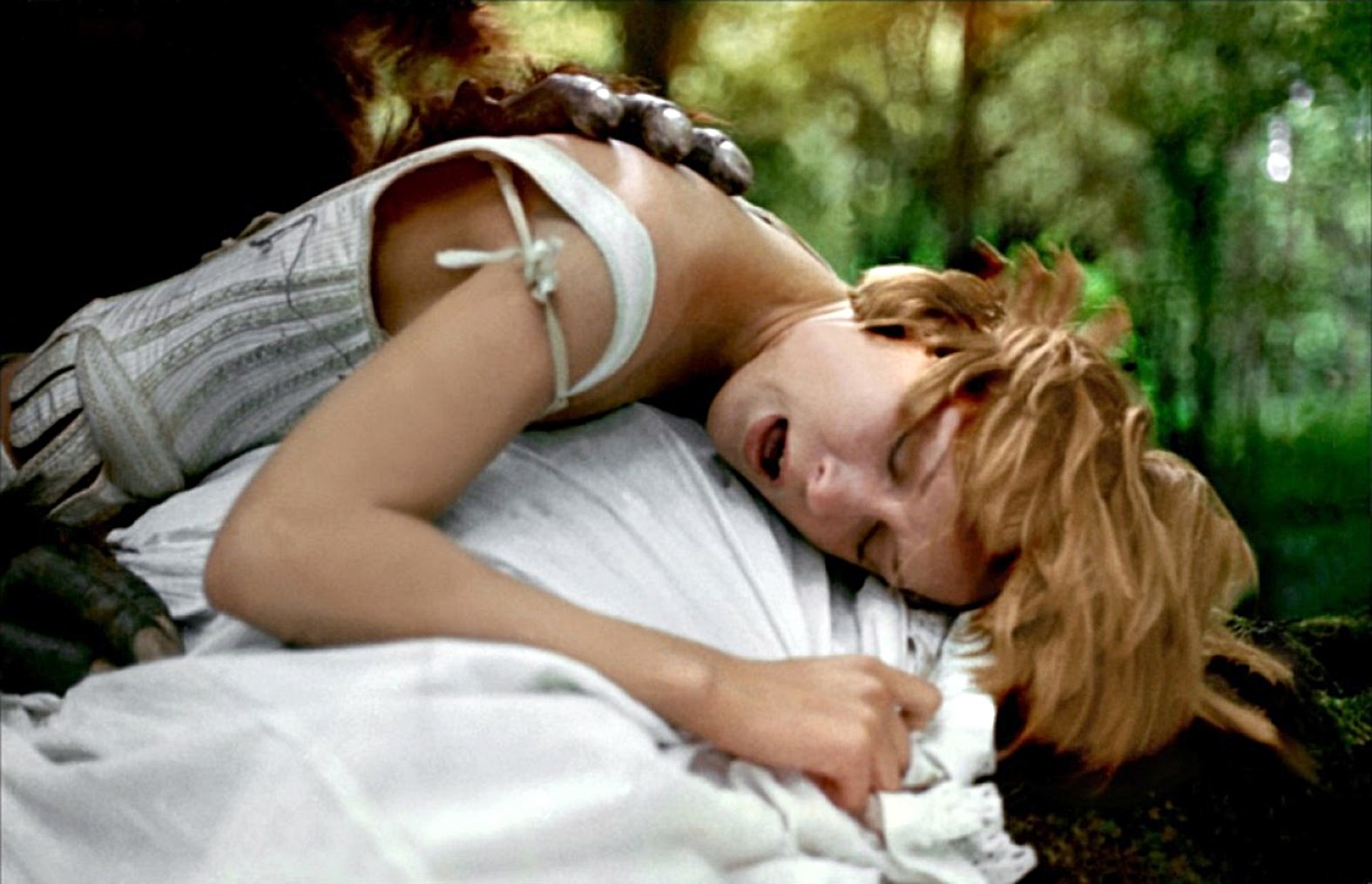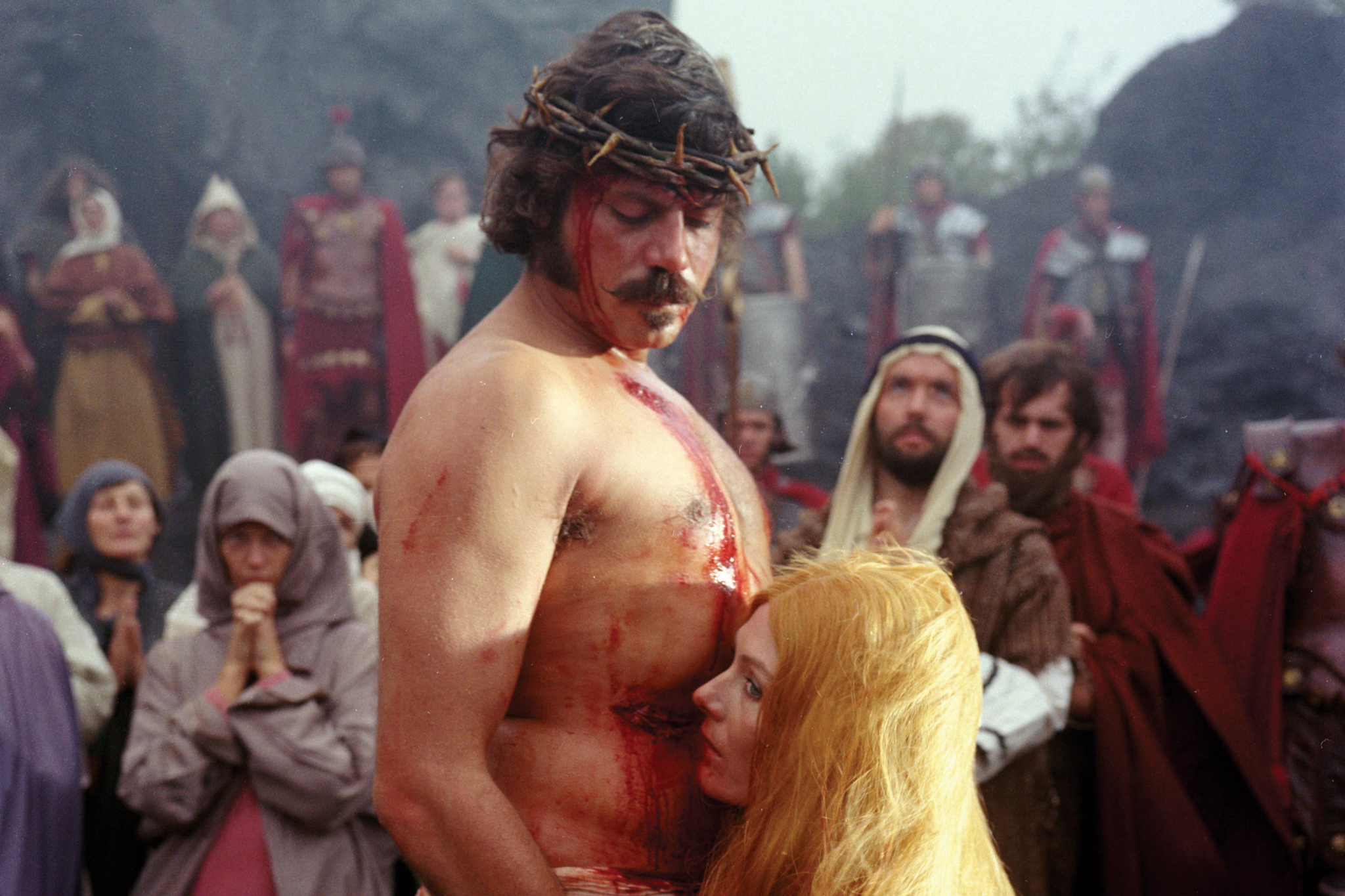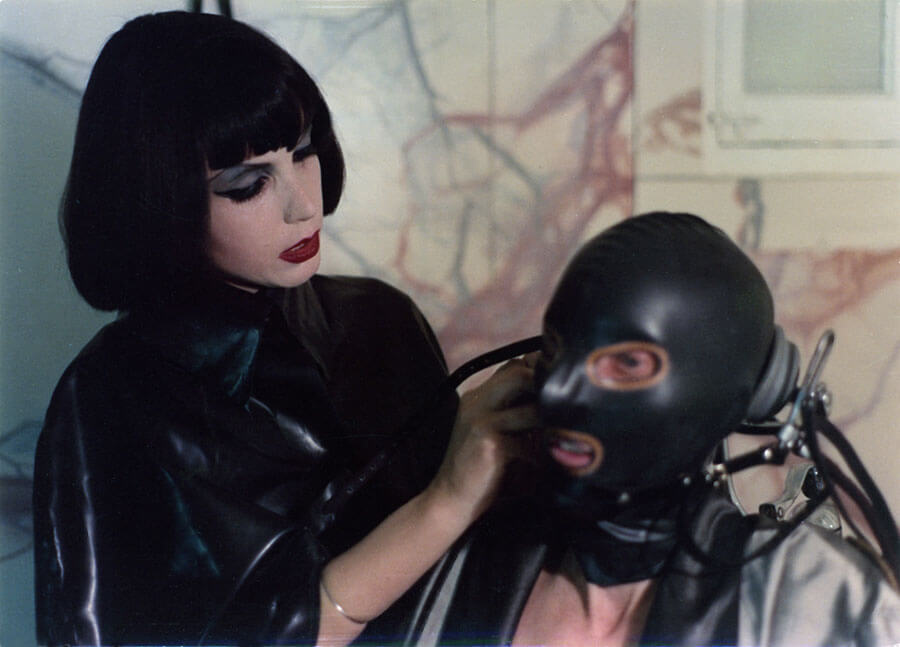The most PERVERSIVE FILMS on record. Fetishism, brutality, blasphemy…

This happened already in 1931, during the premiere of the film Dracula by Tod Browning and Karl Freund. It turned out that the movie scene of digging vampire fangs into Helen Chandler’s fair neck became impossibly arousing for women. Bela Lugosi, who played the title bloodsucker, was inundated with love letters from admirers who enthusiastically wanted to reveal their necks to him.
The artists followed on, more and more confidently exploring the recesses of human fantasy. The sexual revolution spreading in the 1970s provided the cinematography with a substantial collection of bold works imbued with eroticism. There are many more films revealing the intimate secrets of human lust, fascination with carnality rooted in the psyche. Some, however, were particularly deeply embedded in the memory of viewers. They penetrated her deeply, shocking, corrupting and arousing.
The Story of O (1975)

Director Just Jaeckin realized a masochistic spectacle of female submission, modeled on the erotic novel Histoire d’O by Anne Desclos. Her literary work was to be a series of love letters addressed to a lover fascinated by the works of the Marquis de Sade. A French writer, a libertine who promotes life in accordance with extreme freedom, achieved by following all desires and instincts. In his works, De Sade presents violence as a source of sexual experiences, and sadism is named after him.
The film stars a beautiful Parisian girl played by Corinne Cléry. In a secluded and charming property in Roissy, a woman undergoes a kind of training that will test her boundless love and devotion to her fiancé. She is subjected to ritual sexual torture full of brutality and violence, but also refinement and anointing. The woman’s anus is drilled by different anal plugs, her labia pierced, her buttocks marked with red-hot iron. When a slave agrees to be shackled, whipped, she becomes an O. Merely a vessel of her lover’s pleasure without her full name. By allowing herself to be used both orally and anally, she proves that she is completely open to her man, completely possessed by him. O’s meek sexual advances reveal her sinful and painful fascination with humiliation.
Beast (1975)

Walerian Borowczyk is one of the most famous and controversial creators of erotic cinema. In his films, he showed, among others, Lucrezia Borgia, who frivolously indulges in sexual games with her father, Pope Alexander VI, and her brother Caesar (Immoral Tales), as well as a convent of nuns that turns into a house of debauchery (Behind Convent Walls).
A stallion trying to impregnate a mare cannot control his lust. He’s excited, thrashing around the runway, kicking. The scene of horse copulation begins the French drama by the Polish director. He carefully looks at the primal desires of a man who wants to be under the power of a sexual monster. Primitive, brutal and hairy. Such a priapic creature hunts the aristocrat Sirpa Lane. It strips her of lace and allows her to experience long-lasting pleasure. A beast endowed with a huge penis, constantly gushing semen and even greater lusts prowls in the forest belonging to a powerful ruler. He attacks every woman he meets, tearing off unnecessary clothes and inhibitions, which allows the victims of the hunt to indulge in intimate closeness. Borowczyk, painting images of a wild relationship between a man and a sexual predator, shows the need to enjoy bodily pleasures beyond all limitations, morality and even humanity. The titular beast is thus uninhibited lust, animal desires that can be temporarily masked by human conventions and customs.
In the Realm of the Senses (1976)

In the article on the history of erotica, I described Nagisa Ôshima’s film as pioneering in showing non-simulated intercourse scenes on the screen. The sensual images of sexual obsession provoked worldwide outrage, so the film could not be made in the director’s homeland. In his production, the Japanese raises the issue of love strongly related to death. Its protagonists, the hotel owner Kichizo and his lover Sad, perform many sexual acts, experiencing all possible sensual pleasure. Various positions used in the film and colorful kimonos are based on erotic woodcuts from the Edo period called Shunga – spring painting. The characters organize sensual orgies and experiment with erotic gadgets. The man places a hard-boiled egg in Sada’s vagina and then eats it. He also seasons his sushi by dipping it into his lover’s vagina. The fact that she’s on her period doesn’t stop him from masturbating her. After sex, he licks the blood off his fingers. In the next scene, Sada begs Kichizo to urinate while inside her so that he won’t have to interrupt intercourse. The world of carnal fulfillment becomes the only one that matters to them. The lovers’ constantly seething desires lead them to increasing violence, which intensifies the intensity of the intercourse. A woman bites her beloved until he bleeds, beats his face, chokes him and plays with a sharp knife. Finally, to maintain his erection and prolong the pleasure, he brings the man to the final orgasm.
The source of controversy surrounding the film was also the fact that the story filmed by Ôshima really happened. The story is about a Japanese prostitute, Sada Abe, who is remembered by the Japanese as the murderer of her lover, Kichizo Ishida. After erotic asphyxiation, she was to cut off the man’s penis and testicles, and then wear them in her kimono as a souvenir. The story became a national sensation in 1930s Japan. It was given a mythical meaning, and artists, philosophers, novelists and filmmakers subjected it to various interpretations.
Crash (1996)

Few films explore perversion and fetishism as deeply and courageously as Crash. Critics were often hostile to the work, claiming, among other things, that it exceeded all limits of depravity. According to the director himself, David Cronenberg, his film “violates the human concept of eroticism”. However, this did not prevent the film from being awarded the Special Jury Prize at the Cannes Film Festival.
Crash presents the story of James and Helen. Two survivors of a car accident develop a dangerous obsession that forces them to watch other road accidents. Watching the bloody spectacle becomes the couple’s greatest excitement. They both begin to feel an overwhelming attraction to hard steel, fast machines, in which they begin to have crazy sex. James and Helen’s lust is ignited by close encounters with death. They join a group that recreates fatal car accidents, including James Dean’s, who lived fast and died young. In addition, the characters watch car safety tests on video like pornographic films, masturbating each other. One of the followers of a kind of cult, Vaughan, explains his fascination with the words: “A car accident is more creative than destructive. It mediates between the sexuality of the victims and an intensity impossible to obtain in any other form”.
The Devils (1971)

There are films in which the erotic tension is born from the conflict between religious commandments and primal lusts and desires. The aforementioned Walerian Borowczyk in the film Behind Convent Walls shows a god-fearing nun fiercely masturbating with a dildo carved from wood. The real explosion of repressed desires, however, comes in Ken Russell’s The Devils.
The scene of collective hysteria in which the entire medieval nunnery fell, through its brutality, eloquent eroticism and profanation of religious symbols, put the censors on their feet. The naked nuns, pleasing the mad inquisitor, Pierre Barre, a professional witch hunter, pull down the figure of Christ from the wall, mount the sculpture, have sex on its face and around the genitals. Dumbly watching, the priest masturbates under his cassock. The Inquisitors, with their fear of sexuality, which they equate with devilish madness, take a perverse pleasure in torturing the possessed. In the film, one of the inquisitors rapes a deranged nun with a brass syringe filled with holy water, which is supposed to flush out all evil from the sinner. Another scene shows how one of the nuns, Jeanne, in a fit of hysteria, imagines that she licks the Christ wounds of her lover Grandier, and then has sex with him at the foot of the cross. Russell’s movie is based on the book The Devils of Loudun by Aldous Huxley. The film presents the story of a real character, a 17th-century Catholic priest Urbain Grandier, who decides to marry his beloved in allegedly possessed Loudun.
The Night Porter

An often exploited source of sadomasochistic eroticism in the film is Nazism. In Liliana Cavani’s work, the main character Max, a former SS officer, works as a night porter in an elegant hotel. One evening, in the crowd of guests, he recognizes Lucia, a former prisoner of the concentration camp, his sex slave. The man returns his memories to the camp past, when he films the defenseless and naked Lucia in a crowd of prisoners, dresses her in children’s disguises so that he can molest his little girl, admires her dancing topless in front of him in long black gloves. Max and Lucia, haunted by the trauma of the past, recreate their sadomasochistic relationship. They return to the master-slave arrangement. The pain and pleasure of their romance were such intense sensory experiences that nothing could compare to them in the post-war reality. That is why the couple recalls the old moments of torture and tenderness in the hotel rooms. Plus, the roles are unexpectedly reversed. Now it’s Lucia who takes the form of the domineering Nazi, and Max willingly and humbly accepts the punishment in guilt for what he did to his lover in the past. He kisses the wounds on the woman’s arm that he himself once inflicted on her. She submits to the torture that Lucia herself had to endure. She breaks the perfume bottle and makes the man stand barefoot on the broken glass.
In response to The Night Porter, Cavani was praised for her courage, but also criticized for showing sexual violence in the context of Nazi crimes. However, the Italian director was cleared of all charges when such respected filmmakers as Luchino Visconti and Bernardo Bertolucci stood up for her.
MAITRESSE (1975)

Before Fifty Shades of Grey, there were many films exploring the darkest corners of human fantasy, full of pain, violence and tight leather costumes. One of the first icons of female masochism was the character of Marlene Dietrich from the 1934 film The Empress, equipped with sensual white fur and a biting whip. In Maitresse, the dominatrix is characterized by black leather pants, a fur scarf and a Louise Brooks wig.
In Barbet Schroeder’s film, Olivier discovers Arien’s torture chamber, who turns out to be a professional dominatrix – a woman who dominates during BDSM sexual practices. When she asks him to assist her with her work, the man becomes involved in a dangerous game. The lovers begin a battle to see who is the more dominant sadist. The constantly increasing violence becomes an incentive for the heroes. The man manages to beat the woman’s buttocks with a leather belt in front of a jealous rival, but she has a greater advantage over him. She stubs out the cigarette in his hand, pierces his nipples with needles, and nails his penis to a board. In the end, the couple manages to achieve an orgiastic balance of power. A woman and a man have sex behind the wheel of a speeding car. She drives the car, he presses the accelerator. In his film, Schroder examines the effects of sexual depravity, which in its fervor can be fatal.
Salò, or the 120 Days of Sodom (1975)

Salò by Pier Paolo Pasolini, together with Ruggero Deodato’s Cannibal Holocaust, earned the title of the most disgusting and drastic films in the history of cinema. The work of the Italian director is extremely controversial due to its drastic scenes, obscene shots, naturalistic depiction of sadism, violence and a whole range of sexual deviations, thus banned in many countries. It was based on the work The 120 Days of Sodom, or the School of Libertinism by the aforementioned Marquis de Sade, who describes the sodomy of four rich libertines who indulge in unrestrained sexual orgies in the company of 42 people.
Pasolini’s film focuses on four corrupt fascist libertines. After the fall of Benito Mussolini during World War II, they kidnap young boys and girls. The victims are taken to a palace near Salò, a town in northern Italy, where they are subjected to gruesome physical and sexual torture. Degraded, shackled, led on a leash. Cruelty and the desire to abuse the body are shown in the scene of desecration of the sanctity of marriage, in which the fascists engage in sodomy with a couple of newlyweds, using them anally. The most famous image of the film, however, is a fragment of prisoners eating human excrement. By showing the characters mutilated and subjected to inhuman tortures, Salò rightly deserves to be called disgusting. Despite everything, it received a few words of praise from historians and critics, who treat the film as a deeply artistic work and one that thoroughly analyzes the mind of the torturer, the essence of fascism and sexual perversion.


